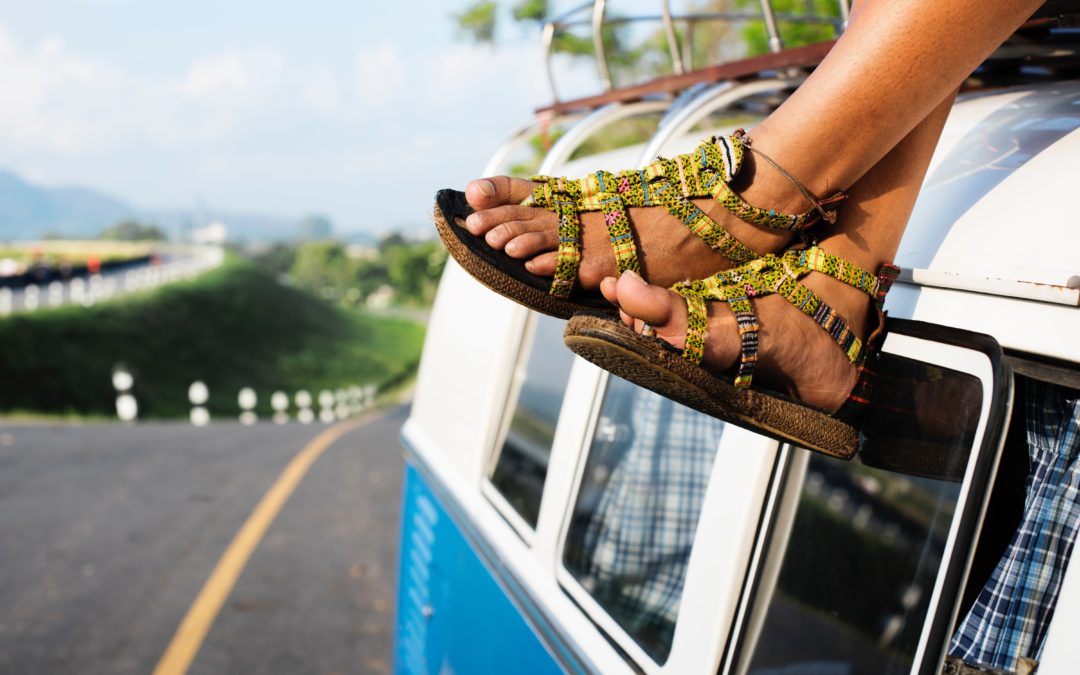In my previous blog post I wrote about common foot issues. In this post, I’d like to talk about what you can begin to do about it.
First and foremost is to R.I.C.E. Rest, Ice, Compress (think ACE wrap) and Elevate. That’s the standard for what to do when we’re hurt, but the main two are rest and ice. The inflammation has to be controlled first and foremost. If it stays inflamed, you cannot move into the healing phase.
Next is to find out if you’re lacking range of motion. Sit down with your legs out straight. Leaving your heels down pull your toes and feet back toward your knees. If you can’t pull them back at least 10 degrees and preferably 15-20 (the medical term is dorsiflexion), you’ll need to begin stretching your calves. I treat a great many people that can’t move past 0! That means their foot is at a 90 degree angle to the leg and they are not able to pull back at all. If you’re lacking motion in your ankles, it puts extra stresses on your foot (and on up the chain into your knees and even higher..hello shin splints, hello lower back pain).
Third, consider splinting at night. There is a picture of one on the products page of my website (I don’t sell them, amazon.com does). On the whole I’m not a huge fan of braces and splints, but there can be benefit to a gentle night splint that holds your ankle at a 90 degree angle (or 0 degrees of dorsiflexion). The benefit is there because as most people sleep their feet point at a downward angle. This means your Achilles tendon is shortened and the plantar fascia on the bottom of the foot is shortened. Sleep time is healing time. Guess who is healing with those tissues in a shortened position? Yep, and now you know why plantar fasciitis hurts so much first thing in the morning. The plantar fascia has been in a relaxed position and has begun healing….and then you take that first step. The tissue stretching back out suddenly is that knifelike pain you get with those first 10-15 steps. A night splint will help those tissues heal in a more elongated position than you normally sleep in and after a few weeks the pain will begin to lessen.
Lastly make sure that when you’re walking your feet are pointed straight ahead. 2. Make sure you’re walking heel to toe. And 3. Make sure you’re pushing off with your big toe! That big toe extending and pushing off is paramount to loading up your arch. I’ll expand further in an upcoming blog post, (if you like homework do a google search for the “windlass mechanism of the foot”)but an active arch is what locks in the bones of your foot, gives you something firm to push off of and dissipates forces. There is a reason bridges and doorways have been arched for thousands of years. Architects stole the design from our feet. Even 5-10 degrees of outward angle when you’re walking is enough to collapse your arch.(Medically we call that overpronation) Again, I’ll expand more on this later, but please make sure your feet point straight ahead when you’re walking. I mentioned Tarsal Tunnel Syndrome in part one and I’ll expand briefly. Sounds a lot like Carpal Tunnel and it is. Most commonly caused by overpronation or walking with a collapsed arch. This tugs on the inside of the ankle. If you’re taking the recommended 10,000 steps a day, that 5000 stressful tugs. Easy was to tell if the nerves protected by the tarsal tunnel are irritated is to sit down and cross the painful side on your knee. This will expose the inside of the ankle. Now with gentle to moderate force tap your index finger in the hollow between your ankle bone and heel. Like you’ve seen someone do to a soda can before they open it. If you get little electric shocks shooting into the foot, it’s irritated. So please try the above techniques and if it’s not helping, please go to the podiatrist or your physical therapist.
I hope you’ve found this information helpful. If you’ve implemented these techniques and aren’t getting any relief please see a podiatrist or a physical therapist for a “shoes off” evaluation of your walking (a gait analysis). The foot is incredibly complex and most foot issues are multidimensional. If you have questions just click here to contact me.

